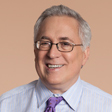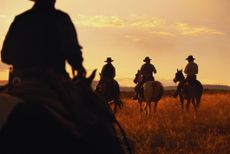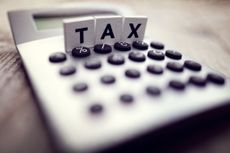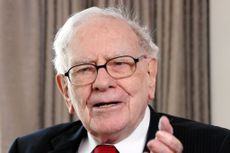The Zen of Investing
Meditate on your portfolio to see the big picture and the small details.

One of the most valuable investing precepts is “Know what you own.” For most people, this means doing basic, fundamental research on one’s holdings. For some, it means reaching for a cold Bud and thinking, “That’s my fifth one today. Maybe I should buy Anheuser-Busch InBev.” In my case, it means sitting in my easy chair and closing my eyes. I believe in meditation—I practice it daily—and every Saturday morning I print out my portfolio of 45 or so stocks and my sector weightings, look at them carefully, and then sit in a chair and meditate upon the data.
I promise you, there is nothing occult about the exercise. I am not looking for divine guidance, although if it were offered, I believe I would accept it. In fact, what is most noteworthy about the process is that it produces some wonderfully mundane benefits.
Watch the big picture. As a hedge-fund manager, I study arcane details about my holdings all the time. But, overwhelmed by the hurly-burly of trading and research, I sometimes lose track of the big picture.

Sign up for Kiplinger’s Free E-Newsletters
Profit and prosper with the best of expert advice on investing, taxes, retirement, personal finance and more - straight to your e-mail.
Profit and prosper with the best of expert advice - straight to your e-mail.
Example: After I added to my position in Apple (symbol AAPL) this spring, the stock surged 9% in a week’s time. I was thrilled—until Saturday morning. That’s when I forgot about my outsize gains and focused solely on the fact that Apple now accounted for 8.5% of my portfolio. That was way too much, especially given CEO Steve Jobs’s health problems. I soon cut my holdings in half.
Apple’s surge coincided with a liftoff in other technology stocks. I knew tech was my largest sector weighting, but I didn’t realize until my meditation that it represented 27% of my portfolio. Did I have that much faith in a resilient global economy? Actually, no. So I cut back on tech. And I bought some shares of Anheuser-Busch InBev—though not because I had just quaffed five cold ones.
Right before the BP oil spill, I started selling energy stocks. When the spill occurred, I dumped my longtime position in Noble Corp. (NE), an offshore driller. A smart move. Or was it?
I didn’t realize until the following Saturday that the sale had left me without a single energy stock. Given that I thought the ultimate impact of the spill would be higher rather than lower prices, this posture made no long-term sense. Although each sale of an energy holding seemed reasonable, collectively they put my portfolio at risk. After all, energy accounts for about 10% of the market’s value.
If the sector rose 10% and I owned none of it, I would quickly lose one percentage point in relative performance versus the market. The following Monday, I purchased an exchange-traded fund that is a direct bet on higher oil prices.
I meditate on the individual-stock level, too. For example, I added to my position in Motorcar Parts of America (MPAA) after it announced that quarterly earnings would be great, only to see the share price drop. Then Motorcar actually announced the earnings, and the stock soared. Go figure. So now, this company, which carries a market value of only $75 million, accounts for 2.3% of my portfolio. Is that too much? Probably.
You may not have to study your portfolio weekly, but I think we all have blind spots when it comes to money management. We tend to ignore the dogs that have hurt our performance for years. Acknowledging them is just too painful. Well, meditating on your portfolio forces you to look at those dogs—and their fleas. Likewise, we can be so giddy about a big winner that we fail to notice that it has either begun to lag badly or that it has grown to encompass 25% of our portfolio. Both despair and euphoria can blind us.
So we need to do a mental, if not literal, rebalancing of our investments much more often than once a year. To paraphrase Socrates, an unexamined portfolio is not worth having. A calm but rigorous look at what you own can work wonders.
Columnist Andrew Feinberg writes about the choices and challenges facing individual investors.

-
 What Not to Do if an Employee or Loved One Is Kidnapped
What Not to Do if an Employee or Loved One Is KidnappedBusinesses need to have a crisis plan in place so that everyone knows what to do and how to do it. Sometimes, calling the authorities isn’t recommended.
By H. Dennis Beaver, Esq. Published
-
 Why You Shouldn’t Let High Interest Rates Seduce You
Why You Shouldn’t Let High Interest Rates Seduce YouWhile increased interest rates are improving the returns on high-yield savings accounts, that may not be an effective place to park your money for the long term.
By Kelly LaVigne, J.D. Published
-
 How To Invest Your Tax Return
How To Invest Your Tax ReturnWhen thinking about how to invest your tax return, prioritize your financial health over aggressive – and risky – ideas like bitcoin.
By Jeff Reeves Published
-
 Fiscal Year Definition: What Every Investor Should Know
Fiscal Year Definition: What Every Investor Should KnowA fiscal year has uses for financial reporting. Here's why it's an important concept for investors to be aware of.
By Will Ashworth Published
-
 Stock Market Today: Nasdaq Soars on Strength in Magnificent 7 Stocks
Stock Market Today: Nasdaq Soars on Strength in Magnificent 7 StocksThe main indexes started the week strong after several mega-cap stocks rallied.
By Karee Venema Published
-
 Where Can the Magnificent Seven Stocks Go in 2024?
Where Can the Magnificent Seven Stocks Go in 2024?The Magnificent Seven have been driving stock returns. Here, we take a close look at the mega-cap hotshots to see what's next.
By Nellie S. Huang Published
-
 How To Avoid Capital Gains Taxes
How To Avoid Capital Gains TaxesA few small changes in your investing strategy can result in big tax advantages.
By Jeff Reeves Last updated
-
 Warren Buffett Stocks: Analyzing The Berkshire Hathaway Portfolio
Warren Buffett Stocks: Analyzing The Berkshire Hathaway PortfolioThe Berkshire Hathaway portfolio is a diverse set of blue chips and some lesser-known growth bets. Here, we look at all stocks picked by Buffett and his lieutenants.
By Dan Burrows Published
-
 Stock Market Today: Stocks Struggle To Gain Traction Around Record Highs
Stock Market Today: Stocks Struggle To Gain Traction Around Record HighsMarkets took a breather ahead of a busy week with big implications for rate cuts.
By Dan Burrows Published
-
 Kiplinger's Mutual Fund Guide For 2024
Kiplinger's Mutual Fund Guide For 2024Giant U.S. tech stocks dominate many of the top-performing names in Kiplinger's mutual fund guide, but small and foreign companies are well represented too.
By Nellie S. Huang Published